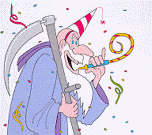
Chinese New Year
The year of the Ox was welcomed in Glasgow with a weekend of celebrations in Kelvingrove Art Gallery and Museum.
Monday, 26 January, 2009 is Chinese New Year when the Year of the Ox dawns once more. If you didn't know, the date is determined each year by the lunar cycle. With Chinese New Year being the second new moon after the winter solstice. Those born in the Year of the Ox are said to be hardworking, dependable, patient and calm. Not to mention stubborn!
One of the most important events in the Chinese calendar, it's a chance to get involved with the celebrations with activities for all the family.
There were performances by Harmony Chinese Music Ensemble, Glasgow Oriental Dance Association and tales from The Village Storytelling Centre.
A range of arts and and crafts workshops were available throughout the day. You could make your own fan and lotus lantern, try out the arts of origami, paper cutting and calligraphy. Face painters were on hand too.
One of the most important events in the Chinese calendar, it's a chance to get involved with the celebrations with activities for all the family.
There were performances by Harmony Chinese Music Ensemble, Glasgow Oriental Dance Association and tales from The Village Storytelling Centre.
A range of arts and and crafts workshops were available throughout the day. You could make your own fan and lotus lantern, try out the arts of origami, paper cutting and calligraphy. Face painters were on hand too.

New Year Traditions



No comments:
Post a Comment